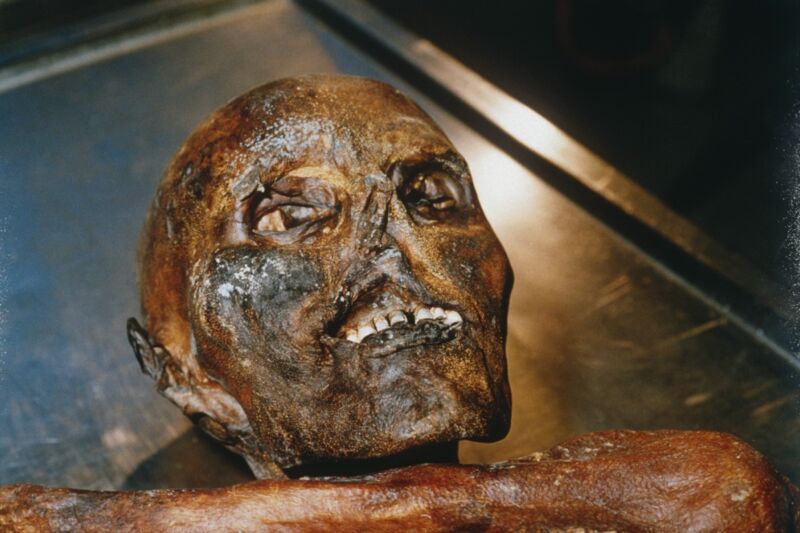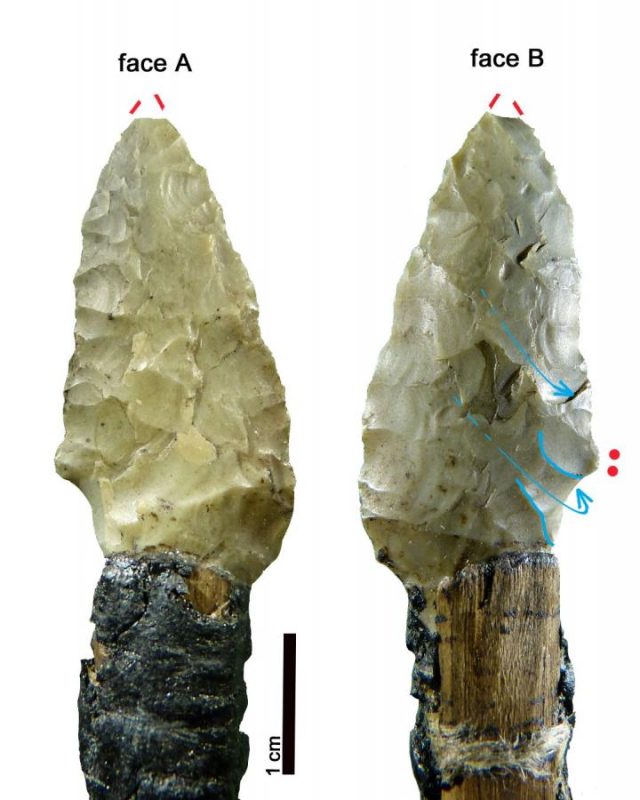
In 1991, a group of hikers found the mummified remains of Ötzi the Iceman emerging from a melting glacier. The popular interpretation—given the extraordinary preservation of the body—is that Ötzi fled from the valley after being attacked and froze to death in the gully where his mummified remains were found. His body and the tools he brought with him were quickly buried beneath the ice and remained frozen under a moving glacier for the next 5,300 years. The gully served as a kind of time capsule, protecting the remains from damage by the glacier.
But a new paper published in the journal The Holocene challenges that interpretation, suggesting that the Ötzi died elsewhere on the mountain and that normal environmental changes gradually moved his remains down into the gully. Further, for the first 1,500 years after his death, Ötzi's remains likely thawed and refroze at least once and quite possibly several times. That means it's much more likely that another ice mummy will be discovered, since no extraordinary circumstances are required to explain Ötzi's preservation.
Archaeologists have spent the last 30 years studying the wealth of information about Copper Age life that Ötzi brought with him into the present. Studies have examined his genome, skeleton, last meals, tattoos, and the microbes that lived in his gut. For instance, in 2016, scientists used DNA sequencing to identify how Ötzi's clothing was made and found that most of it was made from domesticated cattle, goats, and sheep, although his hat was made from brown bear hide and his quiver from a wild roe deer.

"His leather and fur gear reveal that he came from a people whose dining and grooming habits were quite varied," Annalee Newitz wrote for Ars at the time. "They were not content with just a few domesticated species; they hunted for other kinds of game when it suited them. And Ötzi, at least, was repairing his clothing as much as possible—so leather was obviously valuable enough that it was re-used."
A 2018 paper took a closer look at Ötzi's tools, revealing details of his lifestyle, his last days, and the trade networks that linked far-flung Alpine communities. As Kiona Smith reported for Ars at the time, those tools included a small, well-worn (but well-maintained) kit of stone tools: a dagger, an end-scraper for working hides and wood, a borer, a sharp stone flake used for cutting plants, and a pair of arrowheads. And Ötzi had used his tools until they were nearly worn out. Microscopic analysis of marks on the tools—including the scratches, polishes, and nicks from everyday use, as well as the flakes and chips of flintknapping—revealed that Ötzi’s tools had been freshly sharpened and retouched, but most still bore the marks of a lifetime of hard use.

Also in 2018, scientists analyzed the remnants of Ötzi's last meal in his stomach, concluding that he ate a hearty mountaineer’s high-fat diet of red deer, wild goat, and whole-grain einkorn wheat—but he may also have accidentally eaten toxic ferns. Under microscopes, they identified compact bits of fatty tissue and bundles of muscle fibers, mixed with pollen from einkorn. Mixed in with the partly digested food bits, however, were spores from a fern called bracken, which is toxic to humans and other animals if not properly prepared. A subsequent metagenomic analysis of the samples revealed segments of DNA belonging to red deer and ibex.
reader comments
31